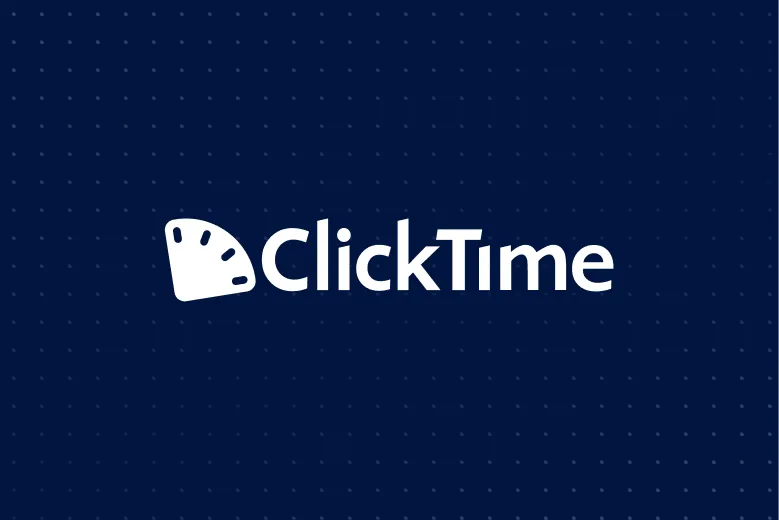
Leveraging Federal Grants
Federal grants provide nonprofits with opportunities. With so much paperwork and process involved, they can be difficult to win. That's where ClickTime comes in.

Timesheet Software Guide
Businesses today need to meet daily deadlines to stay on budget, on spec, and on time. To do this well, leaders must rely on accurate and complete records to control project costs and monitor the health and sustainability of their businesses, and that's where timesheets come in.

Overtime Tracking & Compliance
Employers must accurately compensate employees for overtime hours, or potentially face significant legal and financial repercussions. With new regulations and laws coming into effect, overtime tracking has never been more important.

Track and Manage Employee Overtime
Reduce costs, ensure compliance, and improve operations with easy-to-use overtime reports.

Overtime Penalties
The best way to deal with overtime penalties is to not incur them in the first place. This easiest way to do this is to track employee hours. You can do that with ClickTime.

Reasons Why You Need to Track Time
Why is time tracking important? Here are nine reasons why you should track employee time.

Strategic Forecasting Part 3: Modeling Staffing and Productivity Curves for Accurate Financial Planning
In part one of this series of articles, I discussed "Strategic Financial Forecasting: How Time Tracking Data Transforms Multi-Year Financial Models." In part two, I focused on "Building a Calendar System that Anchors Multi-Year Models." In this article, I will explain how to create staffing and resource allocation models using actual productivity curves for more accurate and actionable forecasts.

Strategic Forecasting Part 2: Building a Calendar System That Anchors Multi-Year Models
Most finance teams use rough approximations like "22 working days per month," creating systematic errors that compound into millions of dollars of variance in multi-year forecasts. Precise calendar systems that account for holidays, time off, and productivity patterns dramatically improve forecast accuracy and stakeholder confidence.

Jira for Sprints, not Audits: Why Jira for Audits Won't Suffice
If your time tracking tool only supports engineering workflows, your audit trail is already broken.

Audit Readiness Isn’t Just Finance’s Job
Audit readiness isn’t just a finance function it’s an organizational discipline. Numbers may reconcile, but if the processes behind them are weak or inconsistent, auditors notice. True audit readiness comes from culture: how teams classify projects, log time, approve expenses, and follow controls when no one’s watching. When culture, systems, and assessments work together, audits shift from annual panic to continuous confidence.

How Time Tracking Data Transforms Multi-Year Financial Models: Strategic Financial Forecasting Series Part 1
Time tracking is one of the most overlooked but powerful inputs in financial planning. This article shows how historical time data fuels accurate forecasting, from building seasonal labor models to aligning capacity with revenue. For finance leaders, time tracking is the foundation of smarter budgeting, scenario planning, and strategic growth.

The Hidden Economics of Engineering: How Clean Data Input Systems Transform Cost Management
Engineering labor is often a company's largest cost—and its least understood. This article explores how clean data input systems transform cost management, enabling better resource allocation, audit readiness, and financial strategy. For engineering-led organizations, clean data isn't overhead it's infrastructure for economic advantage.

Portfolio Governance with Purpose: How Time Awareness Drives Business Value
Time is the currency of strategy. Learn how time tracking powers portfolio governance to improve prioritization, capacity planning, and business outcomes.

Why Engineering Cost Management Can't Rely on Metrics Alone
Engineering metrics like velocity and cycle time are valuable but they don’t tell you what work costs. This post explores why engineering cost management requires structured time data, and how finance, IT, and engineering teams can close the gap between activity and financial insight.

Cost Control in Scenario Planning for CapEx Projects: Why Real-Time Labor Data Is the Hidden Lever
In capital projects, fixed costs rarely derail budgets—it’s the unseen labor. ERP systems provide visibility but often miss the most variable cost driver: people. Real-time labor data shifts cost control from reactive to proactive, helping teams forecast better, catch overruns sooner, and protect margin.

